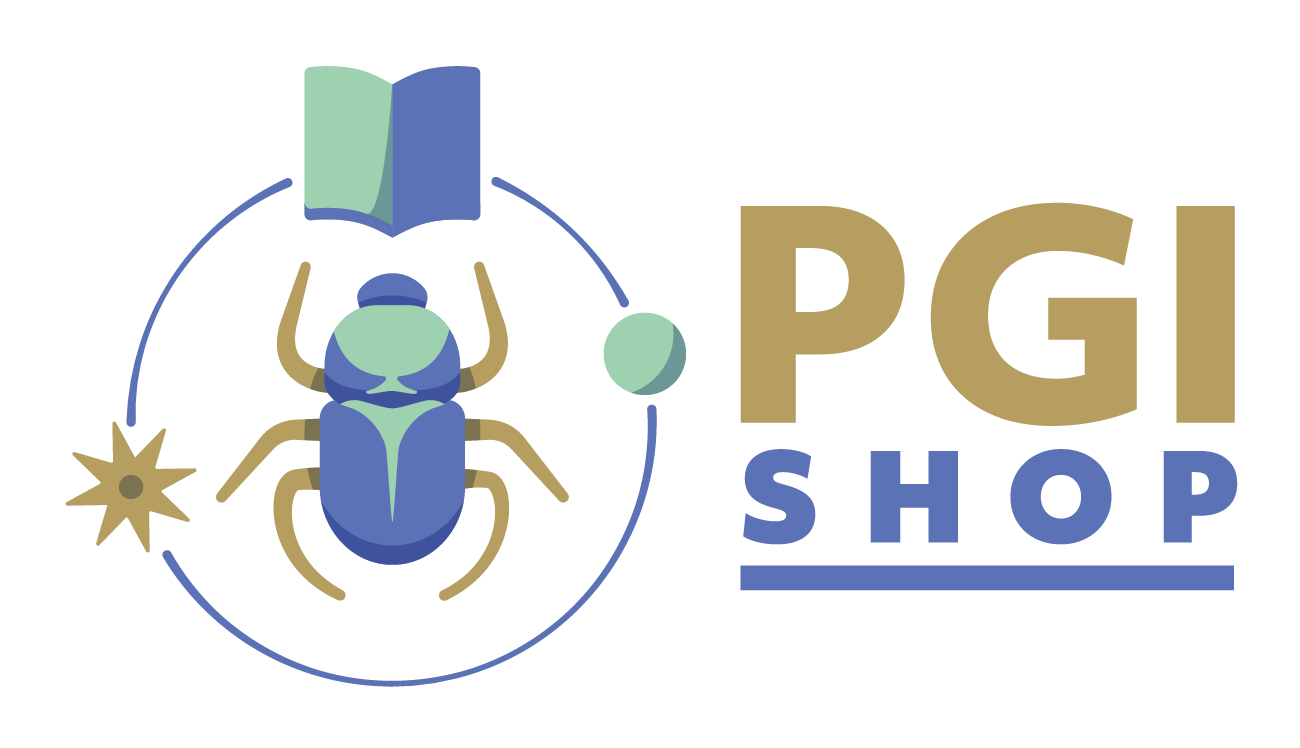Papyrus Bookmark - Geese by Medum painted
painted bookmark 5 cm x 19 cm in protective cover and decorative ribbon
PGI bookmark
made of hand laid papyrus, produced in Egypt
silk-screen printed motif, cut edge
Geese of Medum motif
Egyptian painting reached its first peak with the famous "Geese of Meidum". A frieze of six geese formed part of the bird-hunting scene in the tomb of Princess Itet at Medum. The motif was painted on gesso, a colour-prepared painting ground of alabaster plaster. The choice of colours and the delicacy of the lines make the painting a masterpiece.
Nefermaat and Itet were married and had fifteen children together. Nefermaat is best known from his large mastaba in Meidum, where he was buried with his wife Itet. Nefermaat also held the title of "overseer of all royal construction work" and was thus probably also the master builder of the Meidum pyramid.
The two cult rooms of the mastaba have gained special fame through the technique of their decoration. Most of the inscriptions and depictions were cut into the stone and then filled in with a colour paste. Nefermaat himself comments on this technique in his tomb: "He made his mastaba in this indestructible script".
Part of the cult room of the Itet has been painted, and it is from here that the famous "Geese of Meidum" originate. This is a 162 cm long and 24 cm high fragment of painted stucco, which is now in the Egyptian Museum in Cairo. It shows six geese arranged in two groups looking away from each other. The two outer birds are bean geese, the pair on the left shows white-fronted geese and the one on the right red-breasted geese.
What is special about this painting is not only its extremely detailed rendering of the birds, but also its uniqueness in all of ancient Egypt. While depictions of white-fronted geese are found in several other places, depictions of bean and red-breasted geese are known only from this tomb.
Like her sister Isis, she was considered a goddess of the dead. She helped Isis to find the dismembered body of Osiris as well as to embalm it. Both mourned over the dead in the form of kites. She accompanied the dead into the afterlife and mourned them.
Nephtys is also considered the goddess of magic and divination. Together with Isis, Neith and Selket, she is one of the four tutelary goddesses of the sons of Horus and canopic protector. She protects the canopic of Hapi, in which the lungs of the deceased are kept.
Our papyrus offer
We offer bright, hand-laid natural papyrus from Egypt. From the size of a bookmark, over A4 and A3 up to oversizes of 92 x 192 cm, as well as various papyrus rolls, you are sure to find the right papyrus sheet. The design possibilities with papyrus are manifold. It can be inscribed with hieroglyphics or painted with various motifs. Tempera or watercolours, ink or felt-tip pens are suitable; it can even be printed with an inkjet printer.
Papyrus is a natural product
In the Nile Delta, papyrus leaves are still produced in the traditional way. Families in the countryside harvest the papyrus stems, which can be up to 6 metres high, and process the raw material into papyrus leaves with great skill. Carefully crafted papyri are produced in several steps, which always have an individual, handcrafted character.
The history
Papyrus has been produced and used as a writing material in Ancient Egypt since the 3rd millennium BC. It was always a highly valued product whose sole marketing rights lay with the Pharaoh. The German word "Papier" goes back to the Greek word "pápyros", which in turn is based on the ancient Egyptian word "pa-en-per-aa", which roughly means "the pharaoh's".
If papyrus is stored in a dry place, it has a very long life. Thus, papyrus scrolls or fragments that provided information about life in Ancient Egypt were and are still being found. The most famous papyrus scrolls are probably the Herculaneum Papyri, which were buried and preserved by the massive eruption of Vesuvius in 79 AD. Another 400,000 papyri from the ancient Egyptian Oxyrhynchus are still waiting to be deciphered and will once again bring much of interest to light. Julius Caesar is probably responsible for the greatest loss of knowledge in history. His soldiers set fire to the library of Alexandria, destroying thousands of important papyrus manuscripts.
Fair trade with Egypt
PGI buys Egyptian products directly from the producer. This allows us to bypass traders' stations and offer our customers favourable prices. But the Egyptian producers also benefit from this direct marketing, they achieve much higher prices for their products. We regularly visit our partners in Egypt and discuss the upcoming needs on site.

